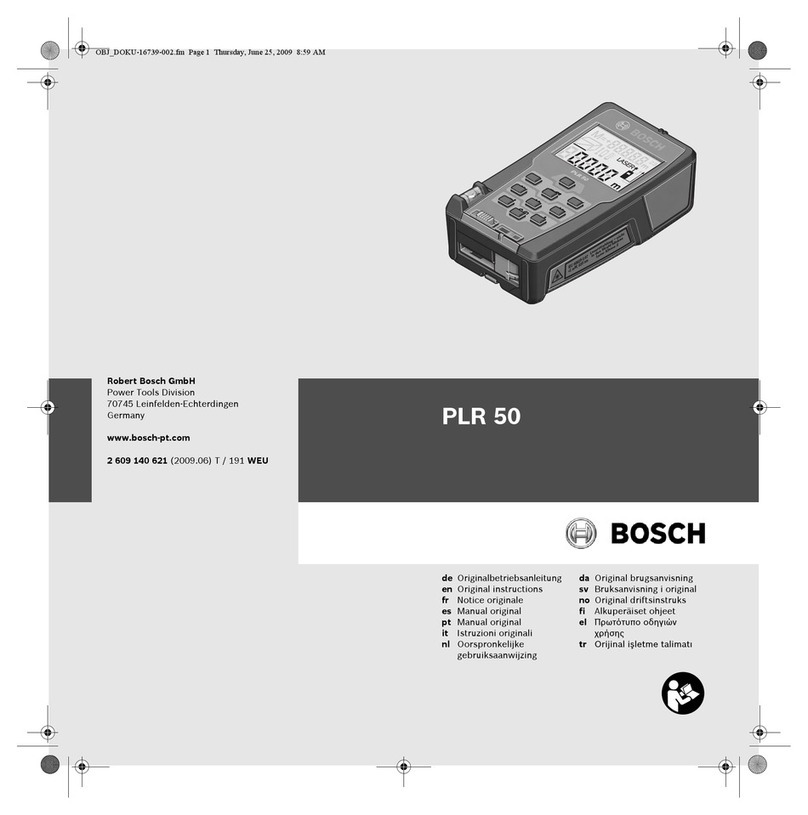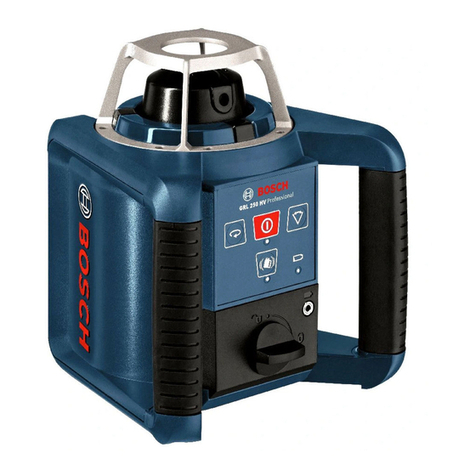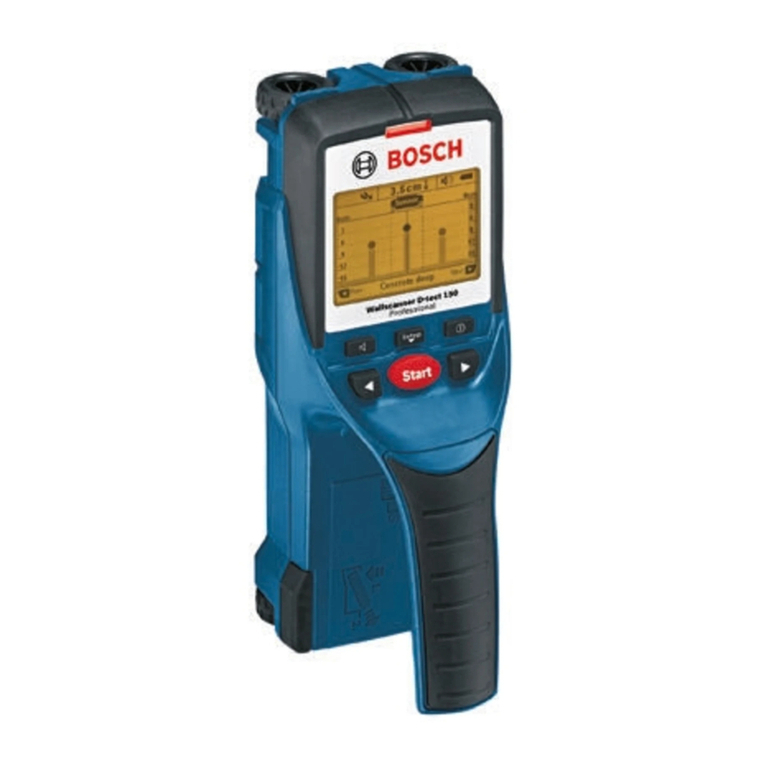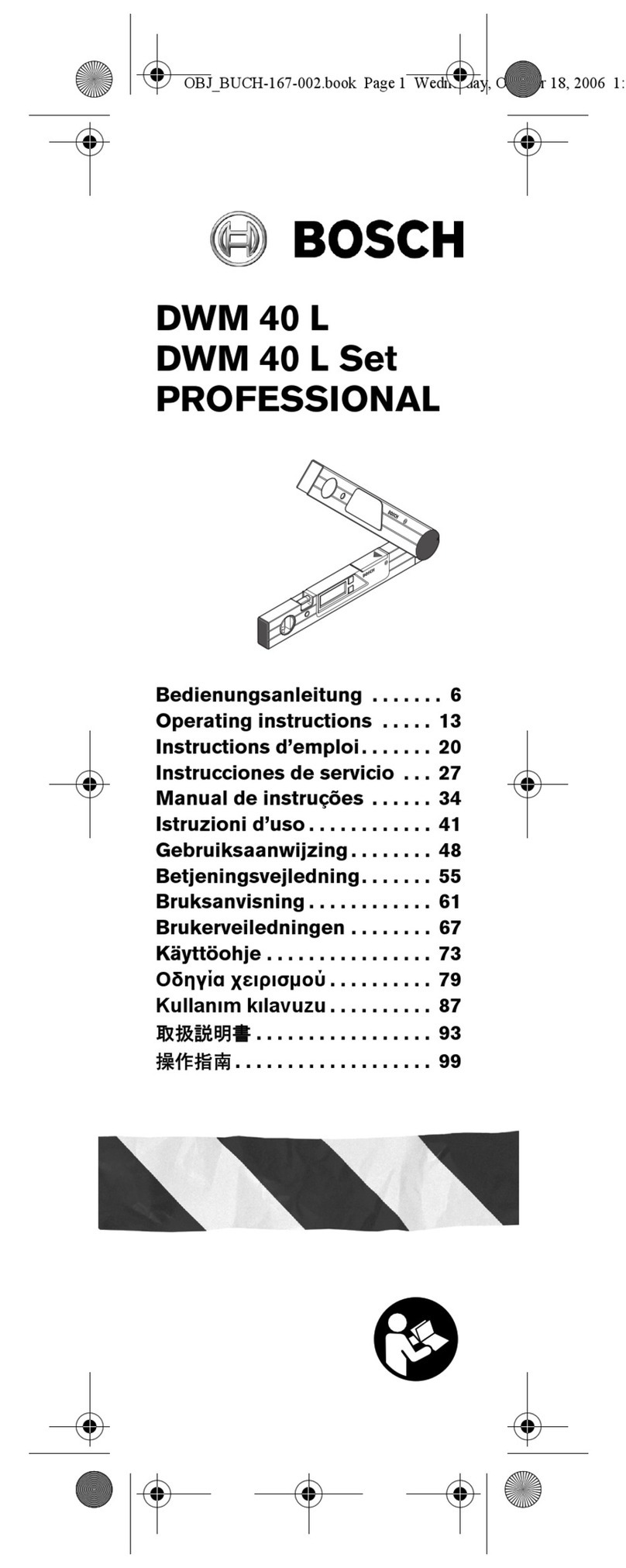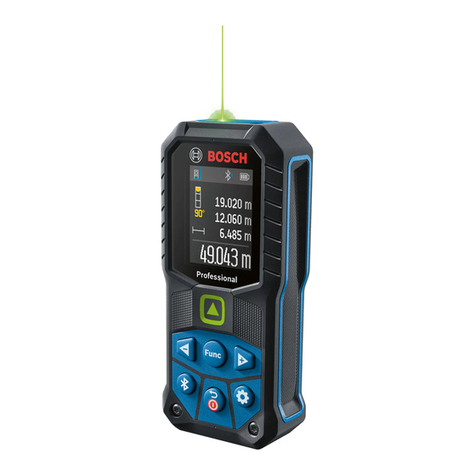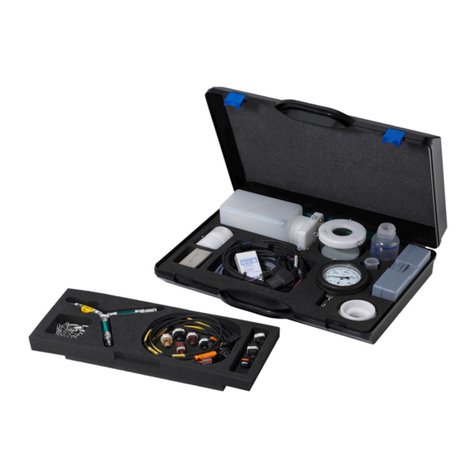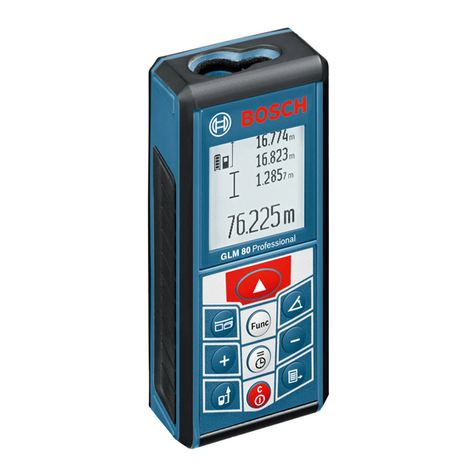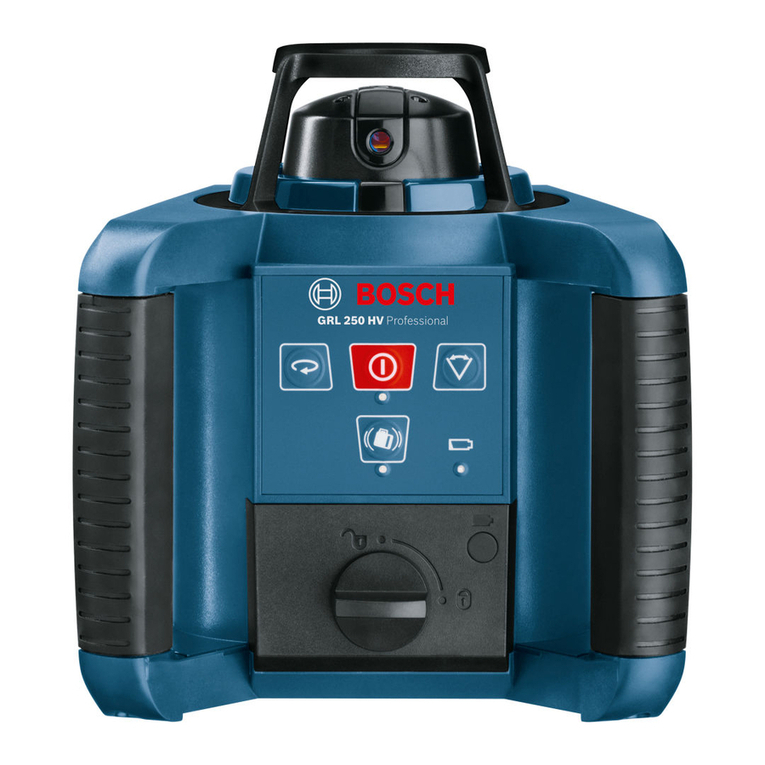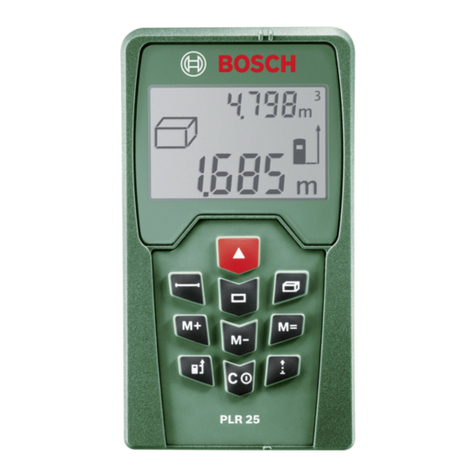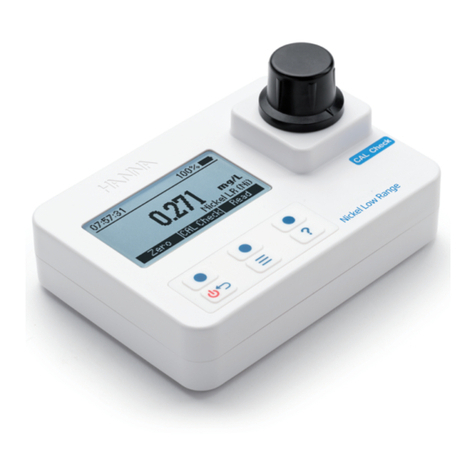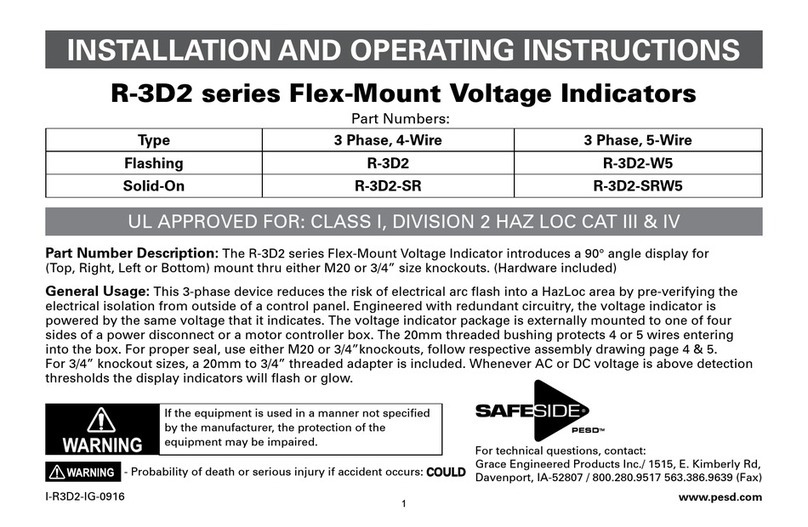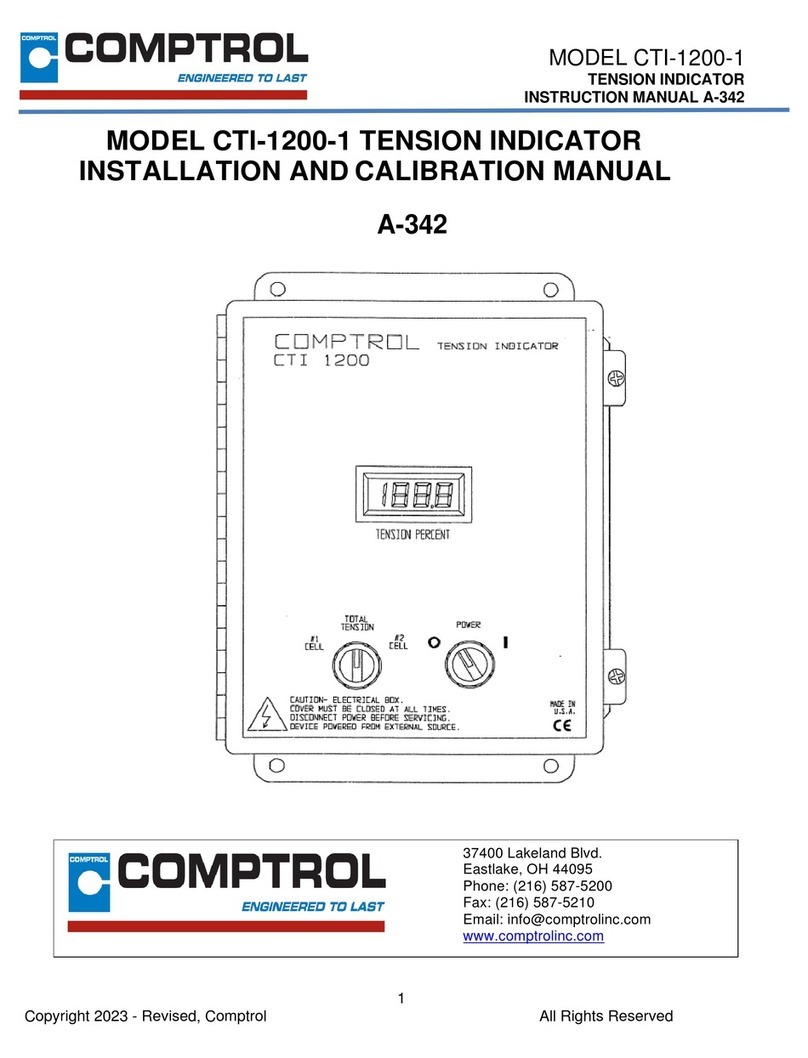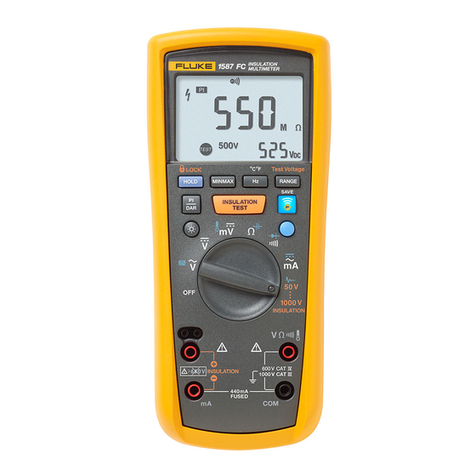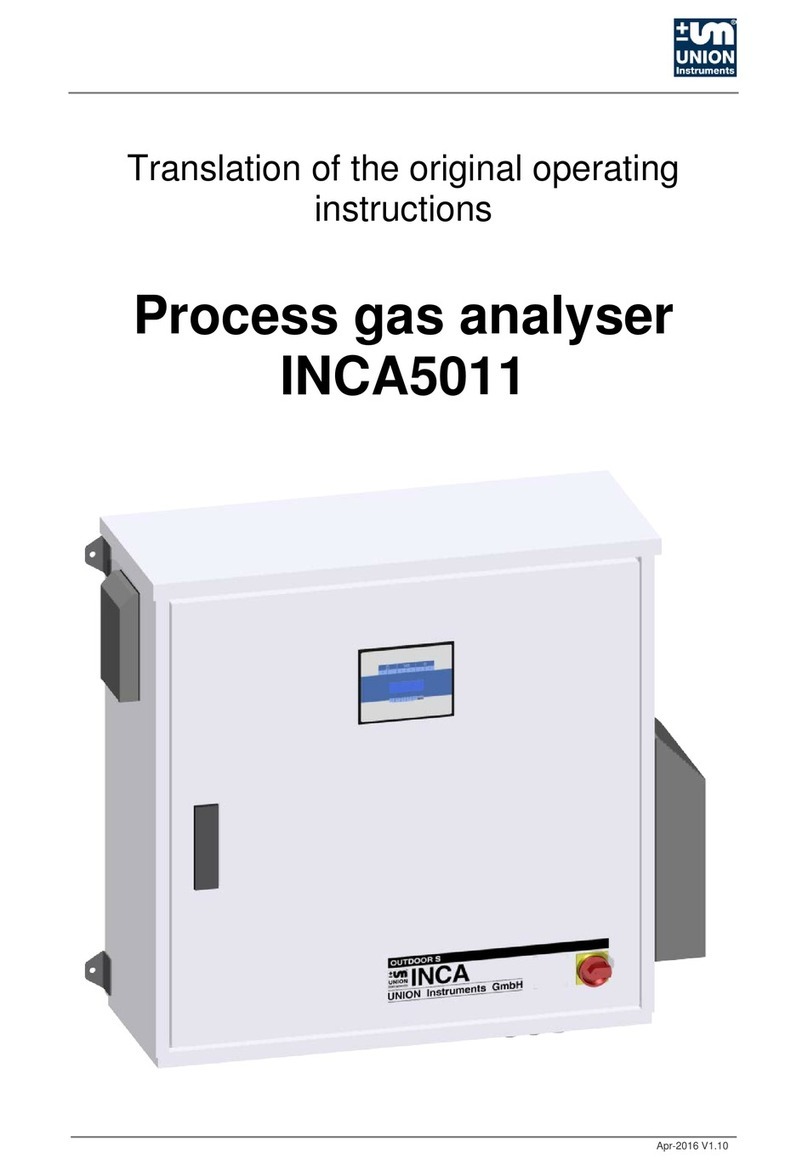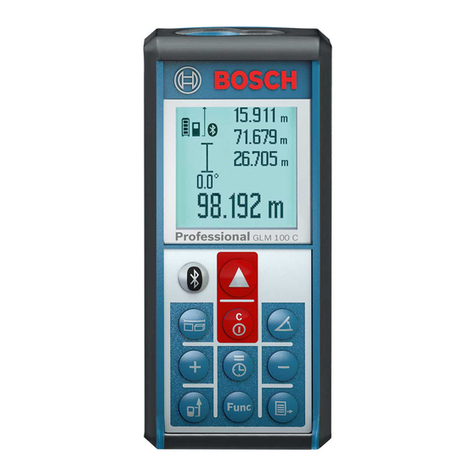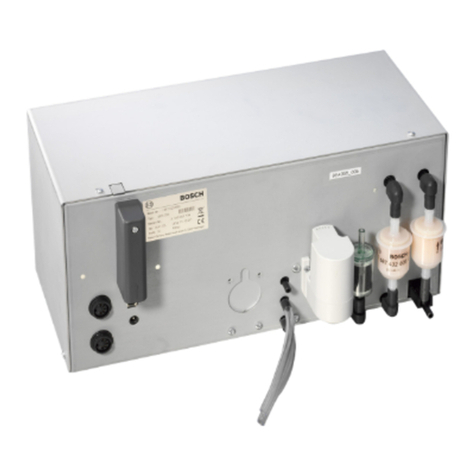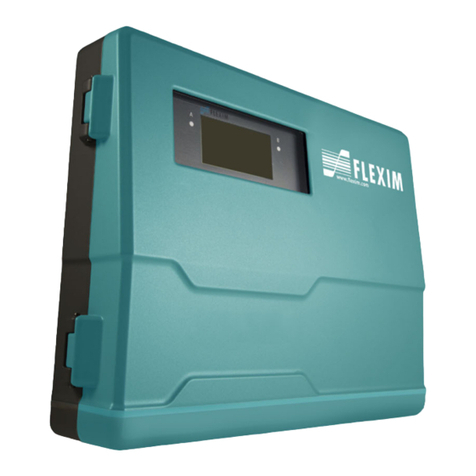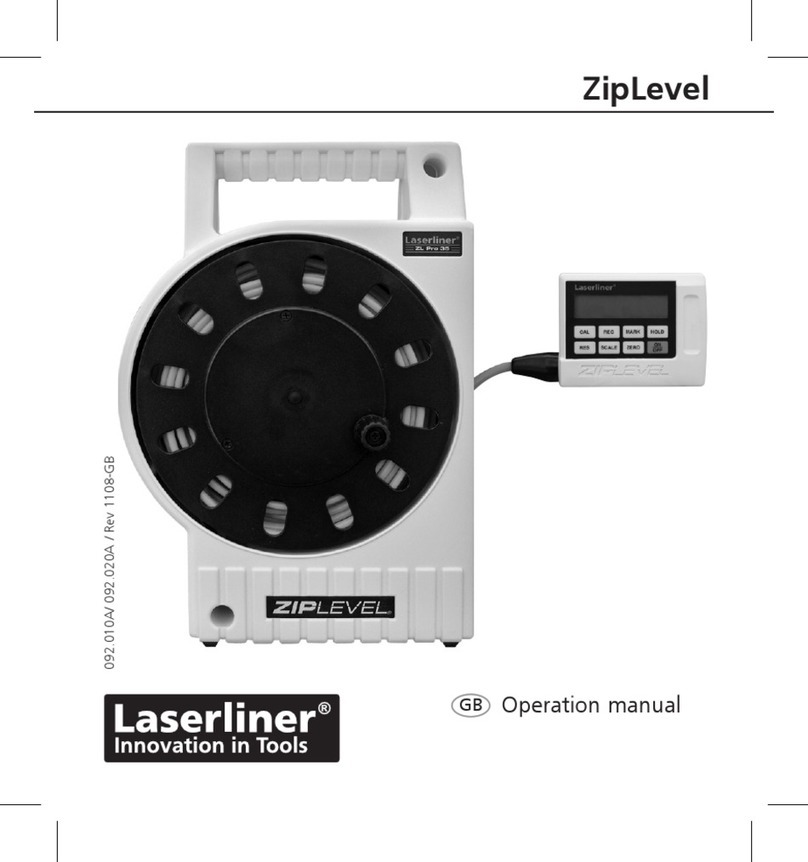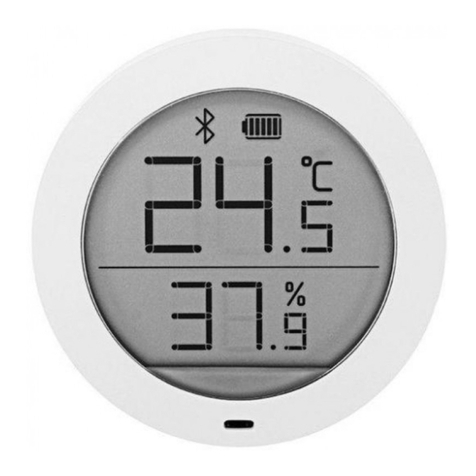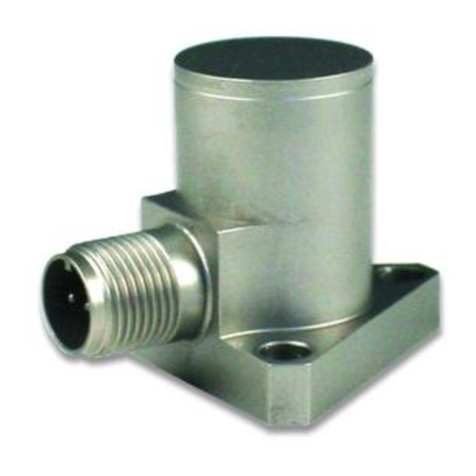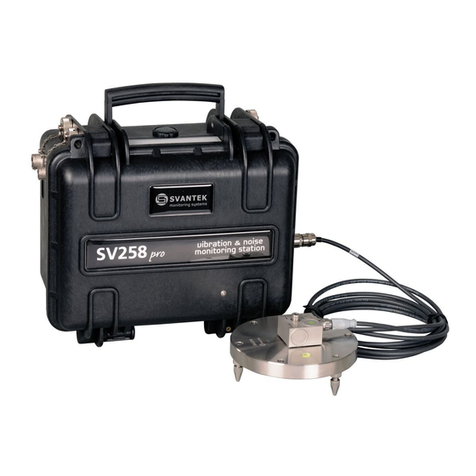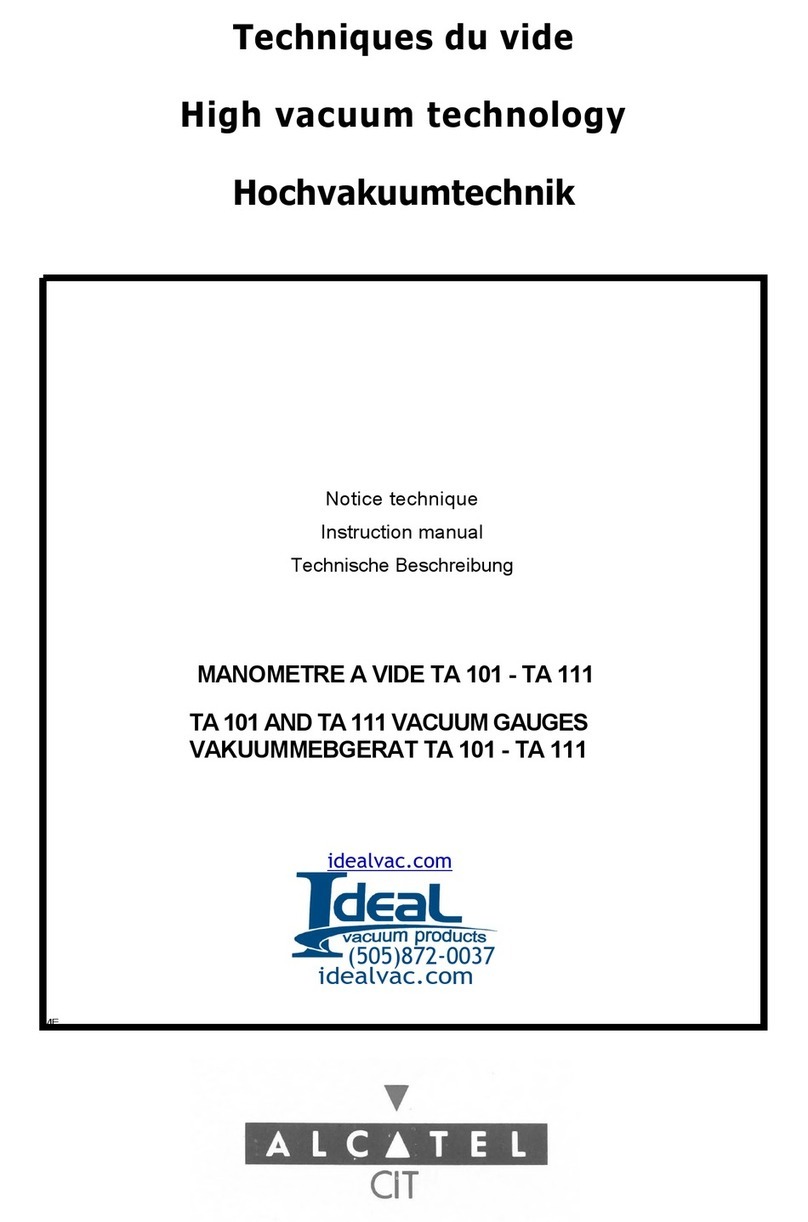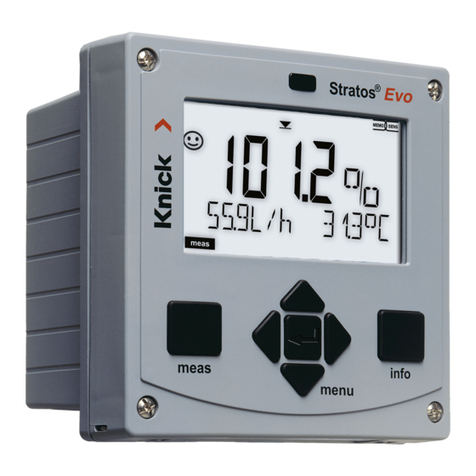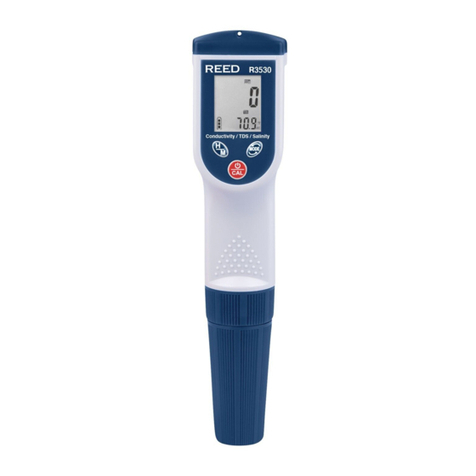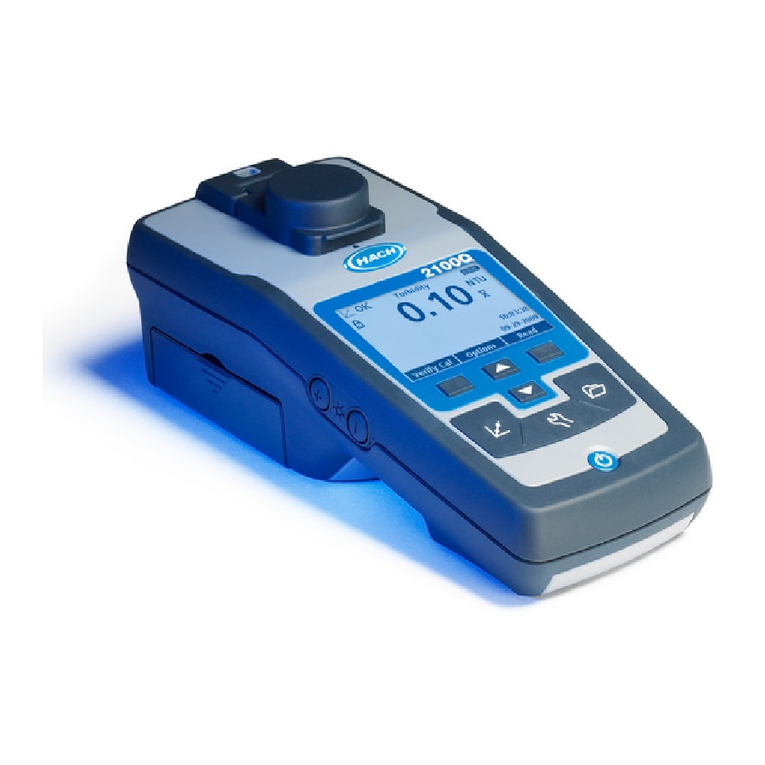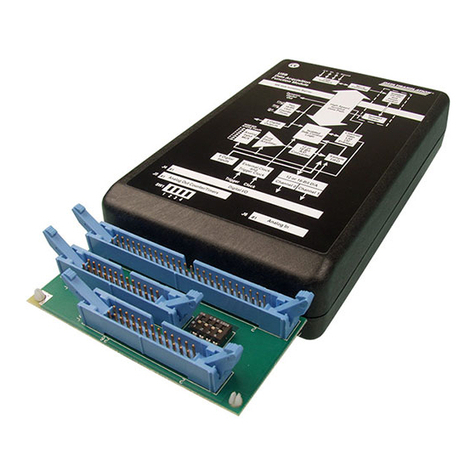
8
3. Briefdescriptionofunitfunctionsand
Servicingtheunit
3.1 Exhaust-gasanalyzermodule
The exhaust-gas analyzer module is designed for the following
measuring ranges:
zCarbon monoxide (CO) 0...10.00 % vol.
zHydrocarbons (HC) 0...9999 ppm
zCarbon dioxide (CO2) 0...18 % vol.
zOxygen (O2) 0...22 % vol.
zExcess-air factor (lambda) 0.500...9.999
zNitrogen monoxide (NO) 0...5000 ppm vol. NO
3.1.1 Analyzerpart(HC,COandCO2measurement)
The measuring channels for HC, CO and CO2function using the
infrared pulsating-light method.
This technique makes use of the ability of different gases to
absorb infrared rays of a certain wavelength.
Aninfraredrayisproduced byalampandinterrupted incyclesby
achopperwheel,thenitpassesthroughanalysissystemsforCO,
HC and CO2in succession. The individual analysis systems are
sensitive to infrared light of different wavelengths and can there-
fore be mechanically arranged one behind the other.
Each of these systems consists of an analysis chamber through
whichtestgasflows,andareceivingchamberfilledwithasuitable
gas mixture.
The systems are constructed in such a way that when zero gas
(air) flows through the analysis chamber, a maximum electric
alternating-voltage signal – the measured-value signal – is gene-
rated in the receiving chambers.
The signal is amplified by the appropriate channel amplifier,
rectifiedandconveyedonthemotherboardtoananalog-to-digital
converter (ADC). The digitalized signal is read and stored by the
MPU.
When test gas containing the component to be measured flows
throughtheanalysischambers,component-specificwavelengths
of the infrared ray are attenuated accordingly. A smaller measu-
red-value signal is generated in the receiving chambers (see gas
circuit diagram, Section 12.5).
3.1.2 Systemcalibration
System calibration is always started automatically when the
systemswitchestoa measuringmodeandtheinfraredmeasured
values at this moment differ from zero.
Duringsystemcalibration,asolenoidvalveswitchesthezero-gas
inlet (with carbon canister) into the test-gas duct for the duration
of calibration. During this process, zero gas (air) is used to
determine the actual system sensitivity of the HC, CO and CO2
measuring channels. This value is then stored as the zero point.
If the exhaust-gas analyzer module is still in analysis mode after
15 minutes, system calibration is repeated. Here, the analyzer
module automatically checks whether analysis is currently taking
place and, if it is, delays system calibration until all measured
values have fallen to zero.
3.1.3 Self-test
The BEA performs a self-test during which it checks all its most
important functions. Any malfunctions detected result in an error
message (Section 8).
3.1.4 Adjustment(HC,COandCO2measuringchannels)
During1-pointadjustment(recalibration)withcalibratinggas,the
measurement effect (difference from zero) is measured. The
analyzer module is informed by means of a nominal value as to
which concentration of calibrating gas corresponds to this
measurement effect.
Youmaypreselectdifferentadjustmentoptionswhichvaryintype
and frequency, to suit your application.
3.1.5 O2measuringchannel
Thesensitivityofthismeasuringchannelisadjustedautomatically
during each system calibration. During this process, the measu-
red oxygen content is set against the compensating air = 20.9 %
and the condition of the O2measuring sensor is monitored. The
zero point of the O2measuring channel is recognised automati-
cally.
The oxygen measurement function can be deactivated
(Section4.5,Writeparametersmenu).
3.1.6 Compensationofpressureinfluence
Different levels of atmospheric pressure mean that different
concentrations are measured in the analysis system. In order for
the exhaust-gas analyzer module to achieve a correct measure-
ment, the atmospheric pressure to be taken into consideration is
determinedbymeansofanintegralpressuresensor.Theexhaust-
gas analyzer module can then calculate the correct displayed
value itself.
3.1.7 Compensationoftemperatureinfluence
Temperaturesensorsaresituatedonthereceivingchambersand
ontheinfraredlamp.Theoperatingtemperaturesmeasuredthere
are automatically taken into account during the adjustment of the
exhaust-gasanalyzermoduleandtheconversionofthemeasured
value to the displayed value.
3.1.8 Measurementofexcess-airfactor(lambda)
Theexhaust-gasanalyzermodulecalculates theexcess-airfactor
(lambda λ) from the measured concentrations of CO, HC, CO2
and O2. The lambda value is indicated on the display if the
measured CO2content exceeds 2 % and both the oxygen
measurement and excess-air measurement functions are activa-
ted. The oxygen measurement is extremely important for calcula-
ting the excess-air factor. An imprecise oxygen measurement
leads to the incorrect calculation of the excess-air factor. The
lambda measurement function can be deactivated (Section 4.5,
Writeparametersmenu).




















